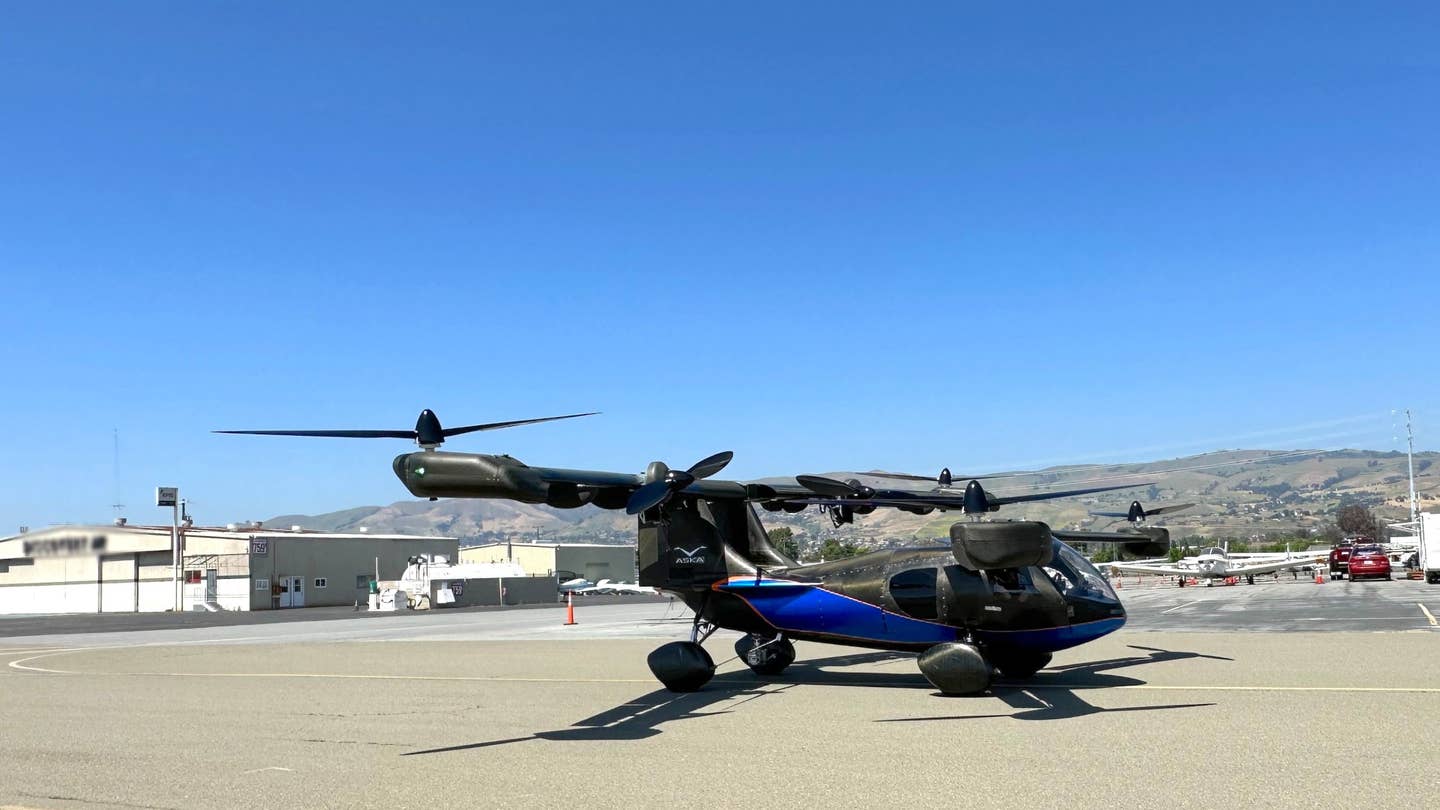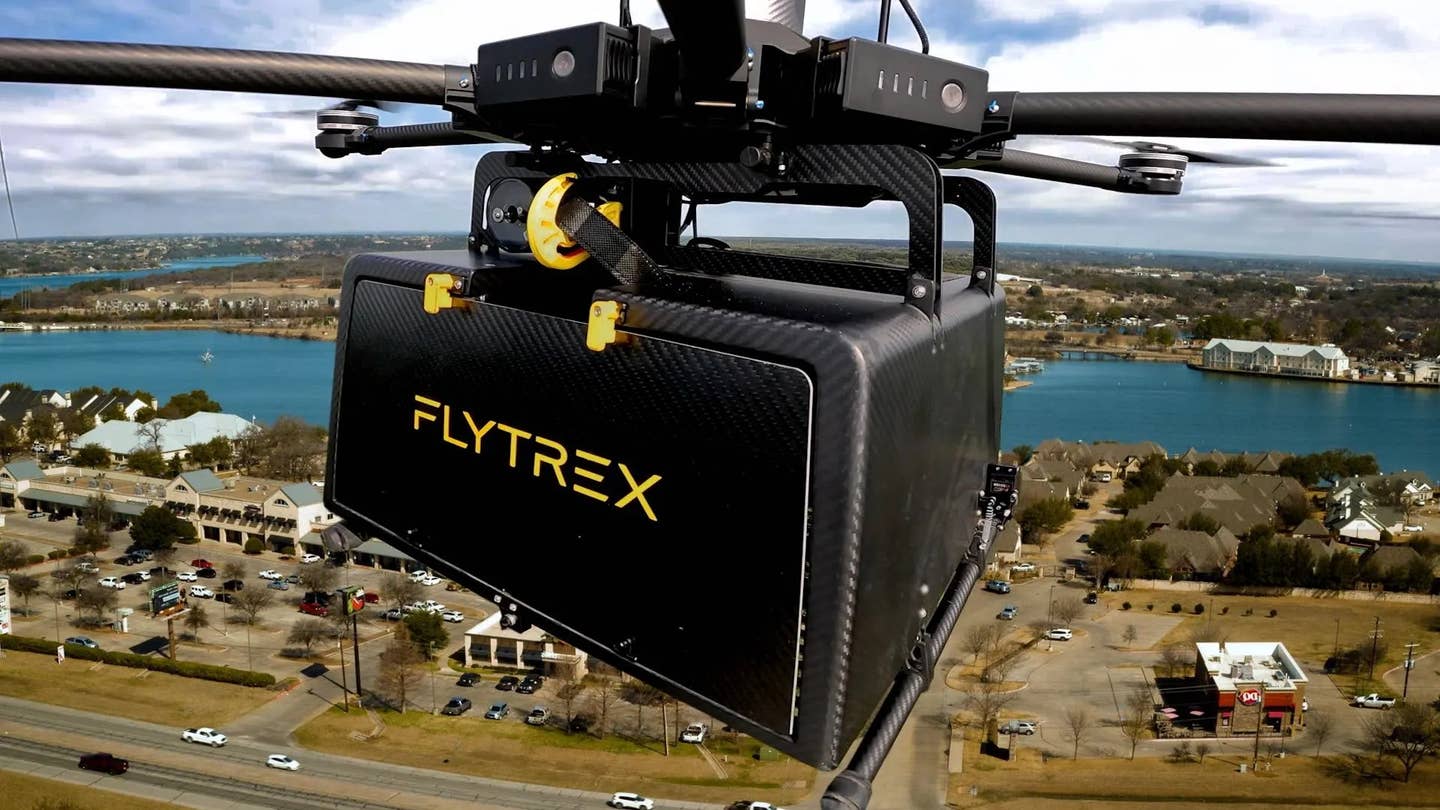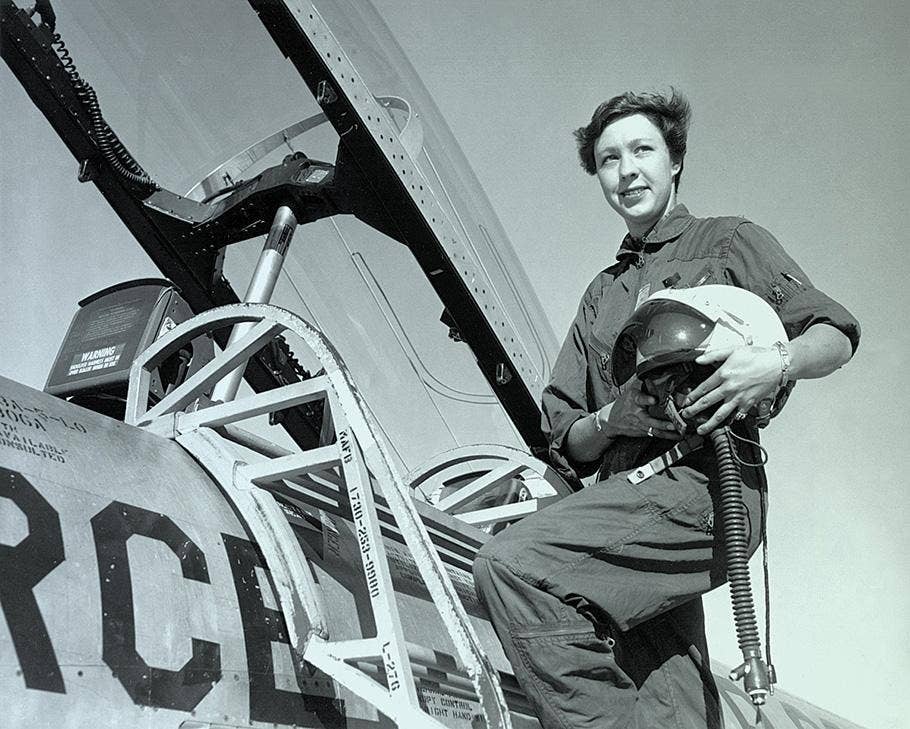Flying Car Manufacturer Aska Nabs FAA Flight Test Signoff
Aska’s A5—a car, eVTOL, fixed-wing glider hybrid—got an FAA greenlight for flight testing.

Aska’s A5 flying car, with wings and rotors unfolded, undergoes field testing. [Courtesy: Aska]
Though slow progress on advanced air mobility (AAM) rulemaking has so far kept electric vertical takeoff and landing (eVTOL) aircraft like air taxis grounded, the FAA is starting to turn its attention to an even more complex design: the flying car.
Following Alef Aeronautics’ announcement that its eVTOL-car hybrid received an experimental special airworthiness certificate, another Jetsonian firm, Mountain View, California-based Aska, has obtained the same FAA approval. Now, Aska’s preproduction four-seater A5, first unveiled in January at CES 2023 in Las Vegas, has the green light for expanded flight testing.
A special airworthiness certificate is a key step in any company’s quest to certificate an aircraft because it enables the validation of technology to progress. But so far, only a handful of companies billing themselves as flying car manufacturers (such as Alef, Terrafugia, and Samson Sky) have attained this stage.
An Amalgamation
Aska’s A5 is unique compared to the aforementioned companies’ offerings. As currently designed, Samson Sky’s Switchblade and Terrafugia’s Transition leverage fixed wings for runway takeoff, while Alef’s Model A uses propellers for VTOL. The A5, though, combines those configurations and takeoff methods.
Billed as a “street legal eVTOL,” the A5 is an amalgamation. On the road, its rounded cabin sits on four wheels, with a collection of wings and rotors folded on top. Roughly the size of an SUV, it’s compact enough to fit in a garage or a parking spot. Early models will be limited to local roads and are best-suited for the “last mile” of transportation.
Before takeoff, the A5’s wings—with rotors in the middle and on either end—unfold, transforming the vehicle into a small fixed-wing airplane. That enables some pretty unique capabilities. Like the Switchblade or the Transition, the A5 is built for short takeoff and landing (STOL) from a runway. But like the Model A, it can also take off and land vertically from an area the size of a helipad.
And with in-wheel motors, its wheels can be positioned outside the fuselage, providing more cabin space (enough for a pilot and three passengers) and better aerodynamics in flight, the company claims.
In the air, the vehicle’s large wings allow it to glide and land safely. And six independent motors provide additional thrust, giving it a range of 250 miles (217 nm) and a top speed of 150 mph (130 knots). In case of emergency, the cabin also includes a ballistic parachute.
For propulsion, the A5 combines lithium-ion batteries with a range extender engine, which runs on premium gasoline and provides charge to the batteries during flight. The hybrid-electric configuration gives it enough reserve flight time to meet FAA requirements. And conveniently, you can juice up the A5’s batteries either at home or at a public charging station.
For now, the A5 needs someone to pilot it. But according to Guy Kaplinsky, co-founder and CEO, it may fly autonomously as soon as 2030. Before then, the company plans to offer a rideshare service by leasing vehicles to pilots.
What’s Next?
Certifying a “fly and drive” vehicle will be an uphill battle—just ask any of the air taxi manufacturers that have spent years trying to certify a less complex design. But when (or if) the A5 gets FAA approval, it has one key advantage—it won’t require additional infrastructure to fly.
“One of the significant advantages of a roadworthy eVTOL, like the Aska A5, is that it does not require the modification or electrification of existing airports since it can maximize the use of today's infrastructure, such as the many charging stations located around us,” explained Maki Kaplinsky, co-founder, chair and COO of Aska. “We are working with local airports in the Bay Area to test and confirm our concept of operations—they open the gate, Aska A5 drives in as a car, drives/taxis to the helipad or runway, transforms into the flight mode, and can take off.”
Amazingly, Aska’s design took just five years to get to this stage. Founded in 2018, the company released the first A5 prototype in 2019. The following year, it signed a five year Space Act agreement with NASA to participate in its AAM National Campaign. By 2022, ground testing in a controlled environment began, expanding to the streets of Los Altos and Palo Alto by the first quarter of 2023.
Simultaneously, the company has been progressing through the FAA’s type certification process. The agency accepted Aska through its intake board in November. Now, just a few months later, the firm is eyeing a G-1, which would provide the basis for A5 certification. Archer, Joby, and Lilium have all received G-1s in the past year.
“The data we are harvesting from flight testing is enabling us to make progress towards our type certification,” said Guy Kaplinsky. “We already completed the initial phase and are progressing towards our next milestone, G1 status.”
Aska opened preorders for the A5 in 2021, with prospective users paying $5,000 to get on the queue. The vehicle will ultimately cost $789,000, and initial deliveries are expected in 2026. But if that price tag seems high, the firm also plans to offer a shared ownership service, On The Fly, wherein participants can split the cost. When realized, Aska’s preorders would amount to $50 million, the company said.

Subscribe to Our Newsletter
Get the latest FLYING stories delivered directly to your inbox






